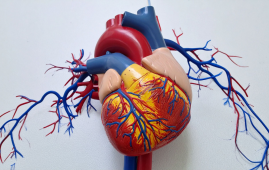

The annual greenhouse gas emissions of a planned neutrino experiment could be on a par to the production of 1000 cars. That is according to a new analysis that finds the main source of emissions of the Giant Array for Neutrino Detection (GRAND) project is different during the construction and operation of the project. The authors say their work is the first published assessment of greenhouse gas emission of a large-scale physics experiment and provides a methodology that could be used for future facilities (Astroparticle Physics 131 102587).
First mooted in 2015, the GRAND project aims to detect ultra-high energy neutrinos originating from deep space using 200 000 antennas spread across mountainous regions around the world. A small-scale prototype of the project started last year but its operation was severely impacted by the coronavirus pandemic. A mid-scale stage of the experiment is planned for 2025 before the full-scale experiment comes online in the 2030s.
Large amount of data can actually lead to a huge carbon footprint
Kumiko Kotera
The researchers examined the global greenhouse gas emissions across the three stages of the experiment, focusing on three sources: travel, digital technologies– such as computers, numerical simulations and data storage — as well as hardware equipment like manufacturing and transporting the radio antennas.
They find that the prototype stage is expected to produce 482 tonnes of CO2 equivalent (CO2e) annually with emissions during the mid-scale stage more than doubling to 1061 tonnes of CO2e per year. The full-scale experiment is estimated to have annual emissions of 13385 CO2e – a 12-fold jump. The researchers estimate that such an output is like the emissions from almost 8000 return flights from France to Western China or the manufacturing of 1000 cars.
The study estimates that in the prototype phase, digital technologies and travel will dominate emissions accounting for 69% and 27%, respectively. Once the main project starts, however, emissions from travel will drop to just 7%. The bulk of emissions will then be shared between hardware equipment (48%) and digital technologies (45%). In the mid-scale phase, the three sources are expected to contribute almost equally. The collaboration say that they will now be producing a green policy, which members will be encouraged to follow.
Environmental impact
Physicist Kumiko Kotera from Sorbonne University in Paris, who co-founded the GRAND project and co-authored the report, told Physics World that they were surprised by the impact of digital technologies. The report even found that sending hard drives by plane could produce less emissions than online data transfer. “We believe that people in general are more aware of the emissions due to travel and hardware equipment production but tend to forget that large amount of data can actually lead to a huge carbon footprint,” she explains. Kotera adds that these emissions could also be hard to tackle, but technological advances and changes in electricity sources are making progress in the right direction.
Kotera expects similar studies to become commonplace in the future, adding that they have been approached by other scientists who are planning to assess their own experiments. “Large-scale physics and astrophysics experiments gather a large fraction of the scientific staff and absorb a significant volume of the science budget,” says Kotera. “As such it seems essential to assess their environmental impact.”
The post Researchers analyse carbon footprint of planned neutrino experiment appeared first on Physics World.
more recommended stories
 High-Intensity Training and Oxidative Stress Insights
High-Intensity Training and Oxidative Stress InsightsNew Evidence Linking High-Intensity Training and.
 Perinatal Mental Health Challenges Highlighted in New Study
Perinatal Mental Health Challenges Highlighted in New StudyMental Health Challenges in New Parents:.
 Safer Allogeneic Stem Cell Transplants with Treg Therapy
Safer Allogeneic Stem Cell Transplants with Treg TherapyA new preclinical study from the.
 World Summit Outlines Core Principles for Healthy Longevity
World Summit Outlines Core Principles for Healthy LongevityWhy Healthy Longevity Demands a New.
 Cholesterol-Lowering Drugs May Help Reduce PFAS Levels
Cholesterol-Lowering Drugs May Help Reduce PFAS LevelsPer- and polyfluoroalkyl substances (PFAS) continue.
 AI ECG Model Outperforms Standard STEMI Triage
AI ECG Model Outperforms Standard STEMI TriageNovel AI ECG Model Outperforms Standard.
 WHO and EU Strengthen Digital Health in Africa
WHO and EU Strengthen Digital Health in AfricaThe World Health Organization (WHO) and.
 Quitting Smoking Slows Memory Decline, Study Finds
Quitting Smoking Slows Memory Decline, Study FindsQuitting smoking is linked to slower.
 Breakfast Skipping Linked to Metabolic Syndrome
Breakfast Skipping Linked to Metabolic SyndromeBreakfast Skippers May Face Metabolic Consequences.
 Cancer Cells Learn to Self-Report: A New Frontier in Immunotherapy
Cancer Cells Learn to Self-Report: A New Frontier in ImmunotherapyHow a Drug Complex Enables Immune.

Leave a Comment